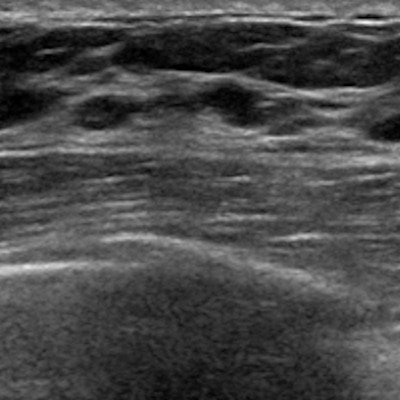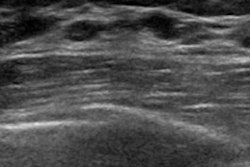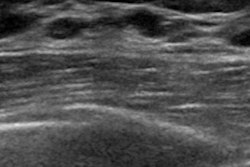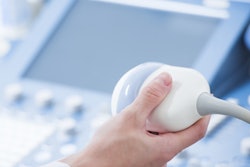
Adding contrast-enhanced ultrasound (CEUS) to conventional ultrasound improves diagnostic performance when it comes to distinguishing benign breast lesions from malignant ones, according to a study published in the November issue of Clinical Radiology.
Ultrasound is the primary supplemental method for characterizing breast lesions found on screening, especially in women with dense tissue, wrote a group of researchers led by Dr. M. Wubulihasimu of the Kashgar First People's Hospital in China.
But determining whether a lesion is benign or malignant can be tricky, particularly for those that are categorized as BI-RADS 3 (probably benign) or BI-RADS 4 (probably malignant). Although most women with BI-RADS 4 lesions undergo biopsy, the majority of those results are benign, the group noted (Clin Radiol, November 2018, Vol. 73:11, pp. 936-943).
"Ultrasound BI-RADS categorization is a useful tool in distinguishing malignant from benign breast nodules ... [and] is characterized by a high sensitivity and a low possibility of misdiagnosis; however, the low specificity of BI-RADS has led to unnecessary concern and biopsy around the world," the researchers wrote. "It is hopeful that a new technique of ultrasound could improve the specificity with little sacrifice of sensitivity."
Adding CEUS to conventional ultrasound could help clarify the nature of lesions because it can better image smaller vessels that can develop through tumor angiogenesis, according to Wubulihasimu and colleagues. Tracking blood flow in these vessels can help clinicians distinguish benign from malignant solid breast lesions.
"Conventional color Doppler imaging was proven to add value to ultrasound in diagnosing breast lesions; however, Doppler imaging was characterized by low sensitivity to small vessels, especially in vessels < 200 mm," the group wrote. "CEUS could exhibit more sensitive imaging for the visualization of the morphology and flow of microvessels."
Wubulihasimu's team sought to investigate whether adding contrast ultrasound to conventional ultrasound could help modify a lesion's BI-RADS grade. For the review, the group included five studies with a total of 992 patients published between May 2005 and October 2017. Wubulihasimu's group calculated sensitivity, specificity, and the area under the curve (AUC). Histopathologic findings served as the reference standard.
The investigators found that CEUS combined with ultrasound had similar sensitivity to conventional ultrasound alone for diagnosing breast lesions, and the difference between the two was not statistically significant. The difference in specificity, however, was significant.
| Value of contrast US for differentiating breast lesions | |||
| Performance measure | Conventional ultrasound | Ultrasound + CEUS | p-value |
| Sensitivity | 87% | 93% | 0.29 |
| Specificity | 80% | 87% | 0.01 |
| AUC | 0.90 | 0.95 | NA |
Combining CEUS with ultrasound boosts the modality's performance for identifying benign versus malignant breast lesions, the group concluded.
"[Our analysis] showed that CEUS combined with ultrasound could increase the specificity of the diagnosis of breast lesions significantly and had similar sensitivity, leading to a better diagnostic efficacy than BI-RADS alone," the researchers wrote.




















